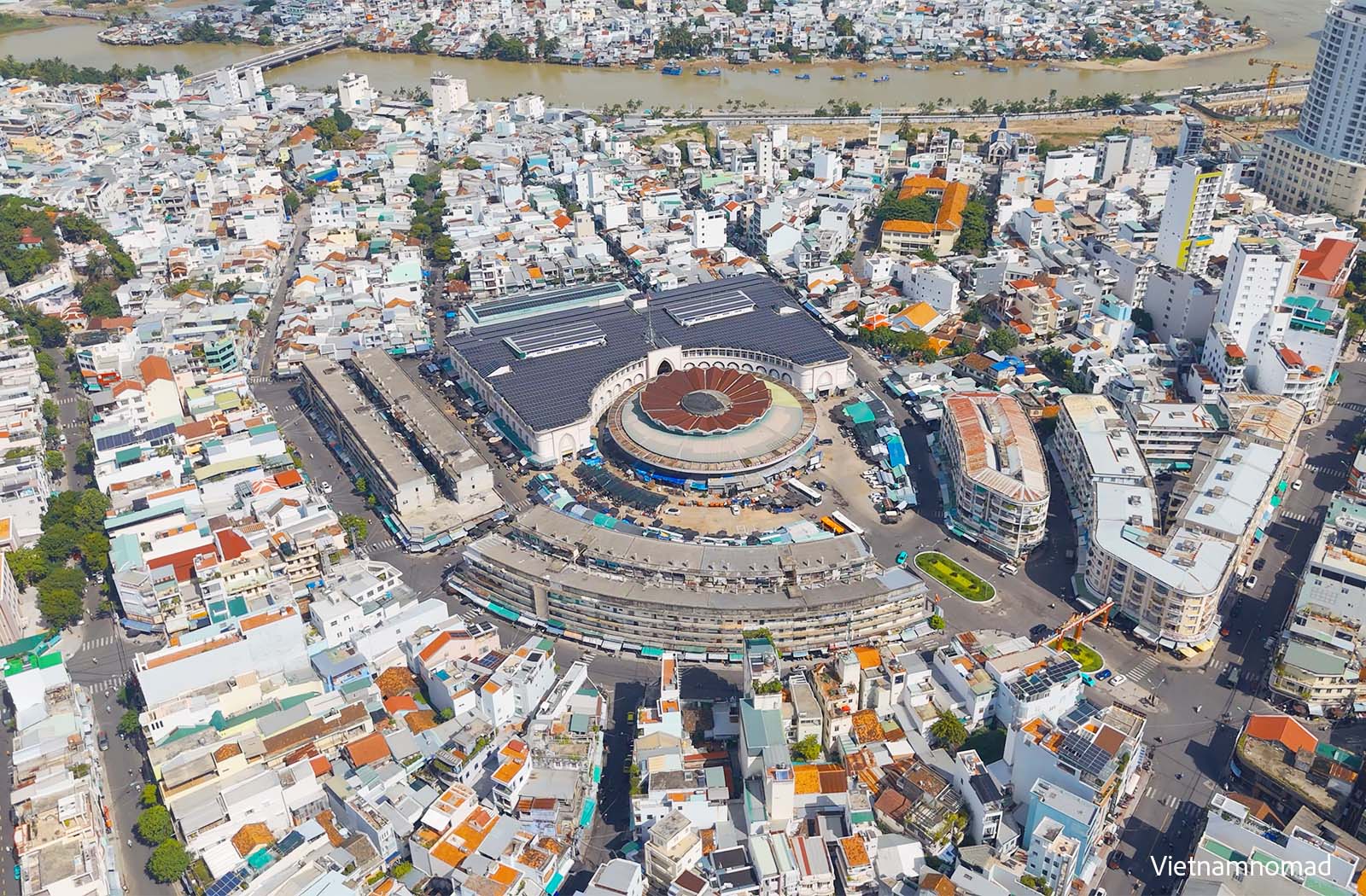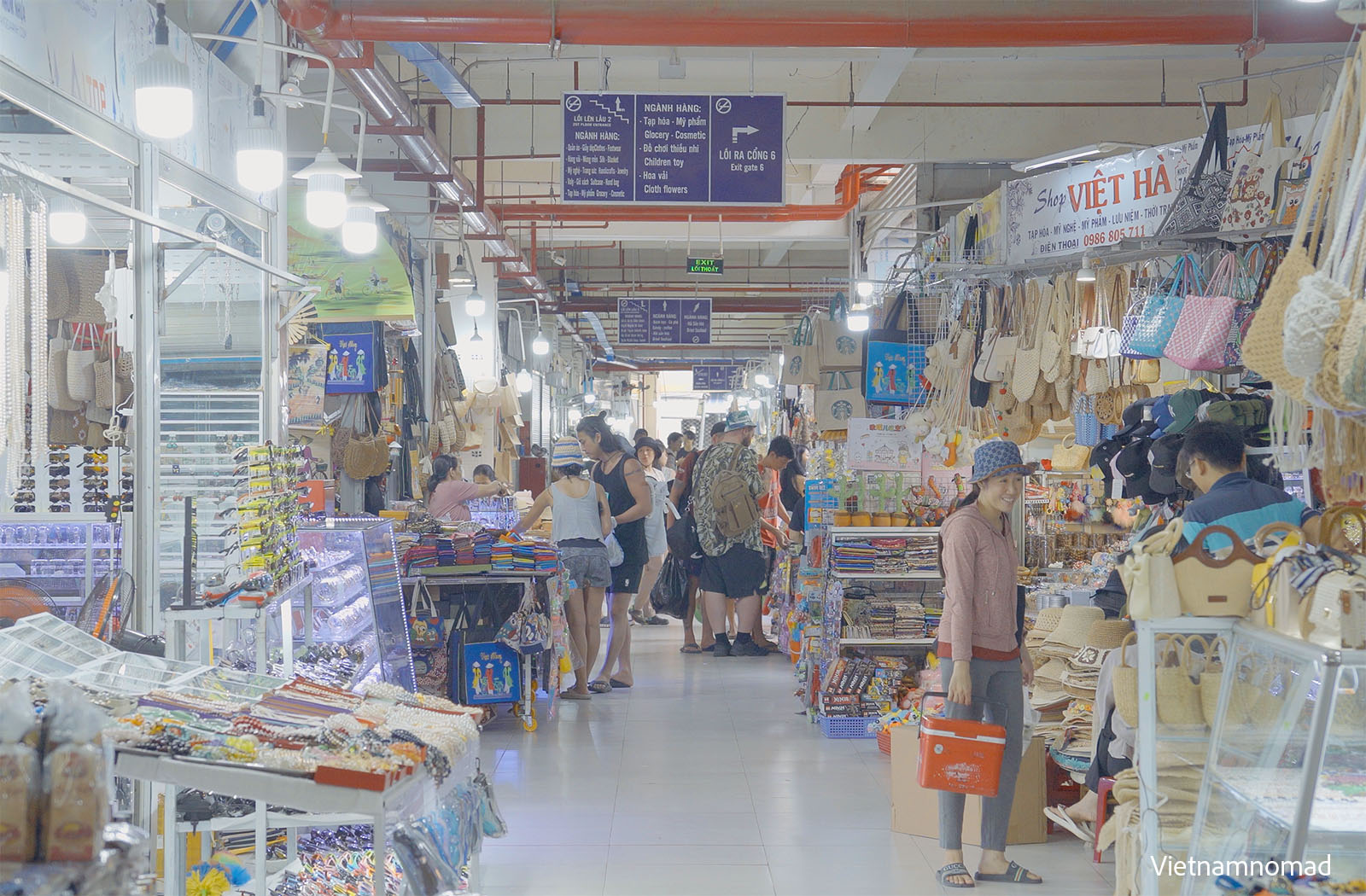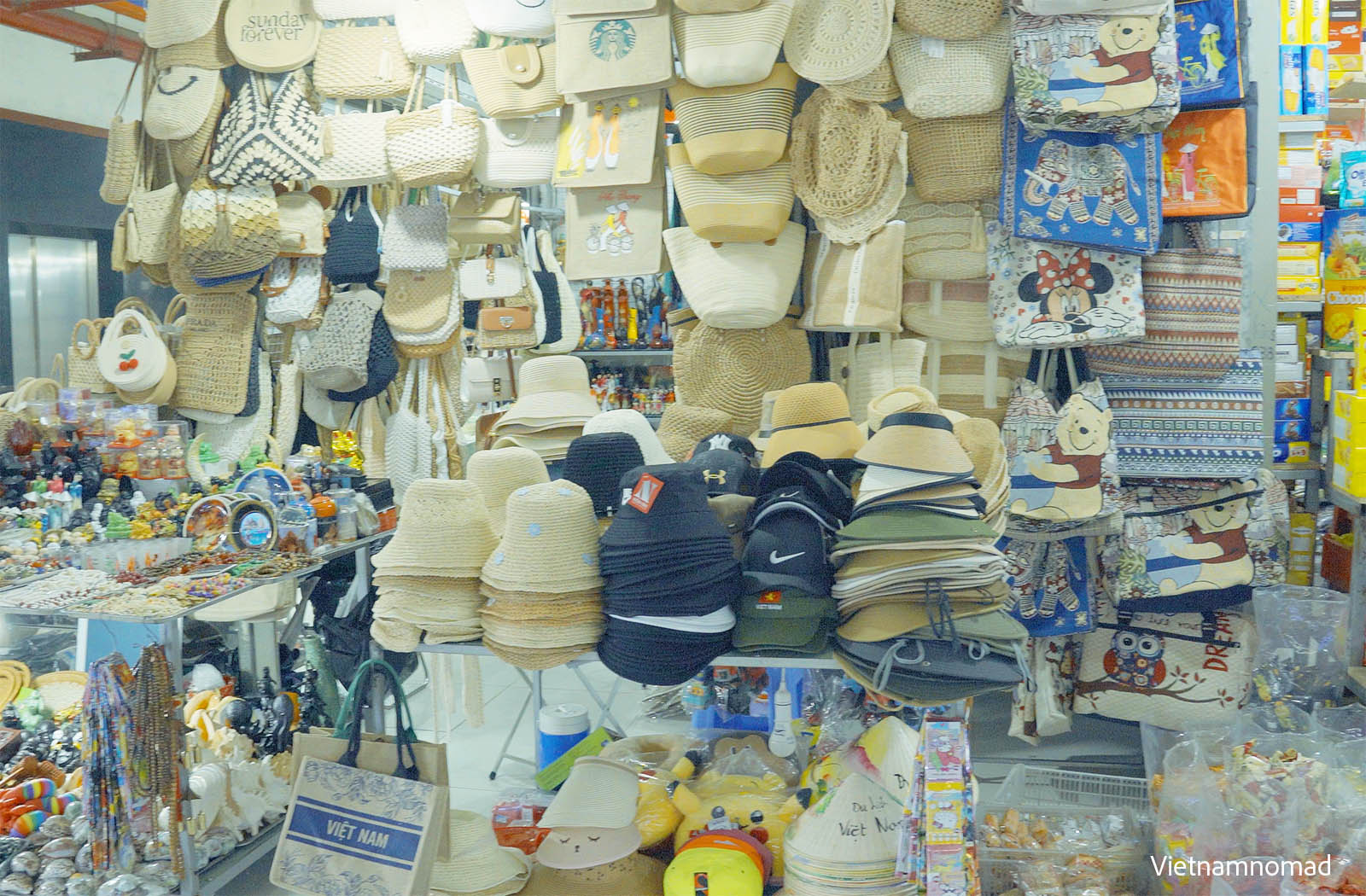Dam Market is Nha Trang’s central market and a must-visit destination for travelers. Officially known as Cho Dam, it is also referred to locally as Cho Cua. Both names reflect the market’s unique location: Dam refers to a swamp, while Cua means river mouth, as the market sits on a swampy area connected to the mouth of the Cai River, right under Ha Ra Bridge of Nha Trang City.
Address: Phan Boi Chau Street, Van Thanh Ward, Nha Trang.
Opening hours: Daily from 5:00 AM to 6:30 PM.
A brief history of Dam Market
Local historical documents suggest that the market began as a gathering place for local trade in the early 1900s, because its strategic location is convenient for both land and waterway commerce. Over the years, the surrounding area became more densely populated, and pollution grew, requiring a major redevelopment of the market. Between 1961 and 1964, several plans were proposed to rebuild the market, but it wasn’t until 1968 – after a massive fire destroyed 126 homes in the area – that construction was finally prioritized. In 1969, work officially began on the market’s reconstruction.
Since its reopening, Dam Market has undergone several renovations, the most notable being the addition of an arc-shaped market area behind the original building. At the time of writing, the city government is planning to enhance the market area further by adding a park, flower gardens, and a fountain in its front yard, aiming to improve aesthetics and provide more recreational activities for both locals and tourists.

Dam Market Plan
From above, Dam Market has a round shape, with its tiled roof rising and falling like a lotus flower blooming in the swamp. The arched wings embracing the market resemble lotus leaves. Therefore, it can be said that the design of Dam Market deeply reflects the cultural values of Vietnam through the image of the national flower: the lotus.
Dam Market covers a large area and is divided into three main sections: the central area, the left wing, and the right wing.
Central area
This is where essential items such as clothing, shoes, and household goods are sold. Visitors will get a glimpse into the everyday essentials of the local people. Additionally, this area displays handcrafted products and souvenirs. You can find unique items like kitchenware made from coconut shells and souvenirs crafted from seashells, capturing the essence of Nha Trang’s coastal charm.
Left wing
In the left wing, visitors will witness the bustling scene of a wet market, where a wide variety of fresh seafood is displayed. This area mainly caters to wholesale buyers such as restaurants or large groups of tourists looking to purchase fresh seafood to cook on their own, rather than dining out at restaurants.
Right wing
Finally, the right wing of the market is where visitors can find Nha Trang’s local specialties, such as mango rice paper, fish cakes, dried seafood, and so much more. Usually, visitors are invited to try samples before purchasing, which is a great way to taste local delicacies without committing to buying large quantities. Additionally, this section also houses a food court offering delicious local dishes like grilled pork rolls (Nem Nuong) and fish noodle soup (Bun Ca).

Things to do at Dam Market
Get unique souvenirs
There is no better place to grab some cute souvenirs for friends and families back home than at Dam Market. With its wide array of handcrafted goods, traditional textiles and costumes, and local arts, Dam Market offers a bit of everything. It’s also less crowded and the price is more reasonable than the Night Market on Tran Phu Street. Take your time to walk around and ask for prices before purchasing to get the best deals. Some of the unique souvenirs to look for are seashell accessories, handwoven scarves and handbags, lacquerware like bowls, spoons, and chopsticks.
Sample local specialties
The market is filled with authentic Vietnamese dishes and delicious local specialties that will not disappoint you. After hours of exploring and casually haggling around with the vendors trying to get the best price, there’s nothing more satisfying than rewarding yourself with a tasty bowl of fish noodle soup (Bun Ca) and a cup of sweet soup dessert (Che). Don’t miss the mango rice paper and dried seafood, such as dried squid and dried baby crabs, which can be sampled at any vendor in the market.
Schedule a photoshoot
Something a bit less common to do here at Dam Market is to organize a photoshoot. The lively activities and colorful goods make a vibrant backdrop for photography. Also, the iconic architecture highlighting intricate details and colonial-era influences offers interesting objects for the photographs. Put on a traditional Vietnamese outfit, like Ao Dai, and take advantage of the dim light, the spiral staircase, and the colorful market scene for stunning travel photos.

Practical tips
- Practice bargaining skills: It’s commonly acceptable to bargain at Dam Market. You can try by asking for a 20-30% discount and negotiating from there. Learning a few Vietnamese phrases always helps (try with xin chao or asking bao nhieu?). Even if you don’t get any discount, it’s still a fun experience to have.
- Be mindful of your belongings: The market is busy all the time, so make sure to always keep an eye on your belongings. It’s best to wear a cross-shoulder bag or wear your backpack in front for better observation.
- Dress comfortably: Dam Market covers a large area with many floors, so wear comfortable footwear and outfits for a pleasant visit. A hat is also recommended.
- Bring cash: Although most of the vendors accept cashless payments and cards are generally accepted, it’s useful to carry some cash on you so that you can pay for street food and parking, which are not worth a transfer fee.
Dam Market is not only a shopping destination – it’s an immersive trip into the heart of Vietnamese culture through architecture, trading practices, and food scenes. Make sure to take your time and immerse yourself in the animated sights, sounds, and fragrances at this place. Share your travel experience with us on the Welcome to Vietnam Facebook group. We can’t wait to hear your awesome stories there!



